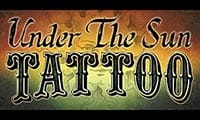Deer mating season equals increased collisions
 On Nov. 2, the clock shifts back an hour, meaning earlier morning and shorter evening light. With that change, many people will be commuting home after work in darkness and during an active time of the year for deer.
On Nov. 2, the clock shifts back an hour, meaning earlier morning and shorter evening light. With that change, many people will be commuting home after work in darkness and during an active time of the year for deer.
The Virginia Department of Transportation (VDOT) is encouraging motorists to be extra vigilant as daylight saving time coincides with deer mating season, increasing the potential for crashes. The highest number of vehicle crashes involving deer in Virginia have historically occurred in November.
Deer are especially active in the fall — particularly from mid-October through November — during their mating season. Motorists should be careful and expect to see more deer on the roadways because deer take advantage of roadside edges for foraging, particularly as other fall foods become limited. Deer cross highways and roads throughout Virginia at all times of the day, but particularly at dawn and dusk.
Drivers should especially use caution near forested areas, along streams and in locations where deer crossing signs have been installed, as these areas have been identified as particularly high deer traffic areas.
Night driving is especially dangerous because visibility is limited to about 250 feet for normal headlights, which creates less time to react to something in the road, especially when driving at higher speeds. Make sure headlights are working properly, clean the windshield for streaks and dim dashboard lights.
Similar to deer, elk in Southwest Virginia mate in the fall and take advantage of roadside edges for foraging. The main difference is the size of elk, with average mature males weighing 750 pounds. Elk regularly roam near and along Corridor Q: Route 460/121 and Route 744 (Southern Gap Road) in Buchanan County. Motorists should use extreme caution in these areas, especially at daylight and dusk.
DRIVING TIPS
- While the urge to swerve is instinctual, do not veer for deer. Swerving aggressively could cause you to lose control of your vehicle and increase the severity of a crash. If a deer jumps in front of you, gradually brake to avoid hitting the animal.
- Prepare for the unexpected. Deer may stop in the middle of the road or double back.
- If you see one deer, slow down because they usually travel in groups so there’s likely to be others nearby.
- Check the shoulders of a road or highway and use your high beam headlights when able. Deer tend to stand on the sides of the road and then suddenly move into the road. Slow down and hit your horn to scare the deer, as they dart and run in either direction.
- If you hit a deer, pull off to the shoulder and turn on your hazard lights. Do not exit your vehicle and search for the deer, because it could hurt you.
If you drive in Virginia’s Elk Management Zone in Southwest Virginia, particularly on Corridor Q: Route 460/121 and Southern Gap Road, keep in mind:
- Elk travel in large herds, are more lethargic in their movements (more similar to cattle) and have huge body sizes. Average mature males weight 750 lbs., while females are around 500 lbs.
- Also, unlike deer, elk are less likely to jump in front of vehicles. However, when they are present on the side of a road, they are less likely to move. Never assume an elk (or any animal) will avoid you.
If you hit and kill a deer or elk that needs to be picked up or encounter a deceased animal creating a hazard on a state-maintained roadway, you can fill out a report on VDOT’s website at my.vdot.virginia.gov or call 800-367-7623 (FOR-ROAD).








